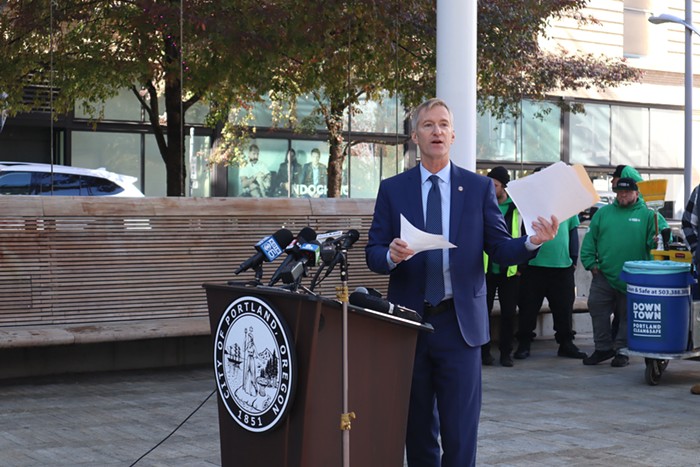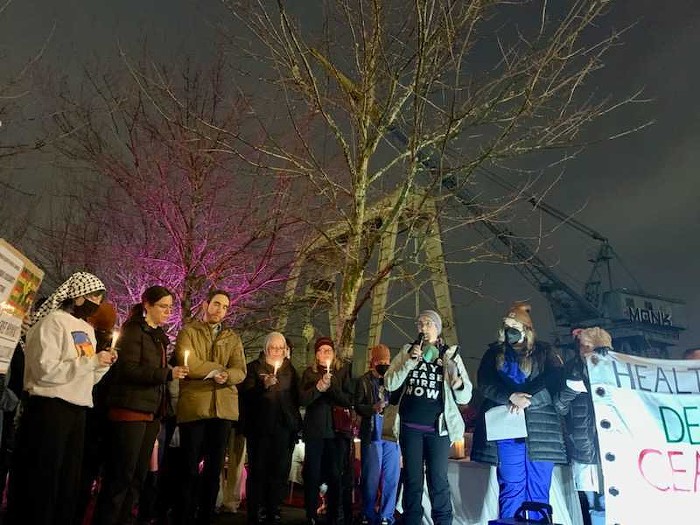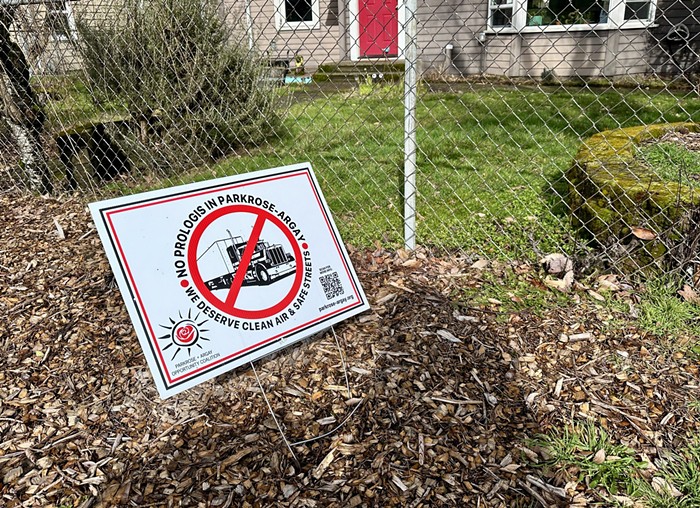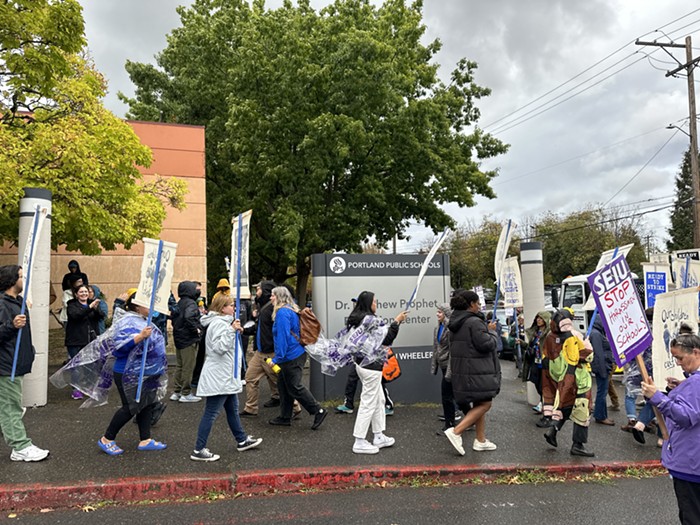
The COVID-19 pandemic is the worst it has ever been, with cases surging throughout the nation thanks to the highly contagious omicron variant. In a recent press conference, Oregon Health & Science University’s (OHSU) Peter Graven estimated about 65 percent of all Oregonians do not have immunity against omicron due to not being up to date with their booster shot or being unvaccinated, meaning that “a majority of Oregon” could get infected with the virus as it sweeps through the state. Multnomah County Health Officer Jennifer Vines said that “most of us are going to encounter omicron” and experience mild symptoms, while “some” will experience more severe cases, hospitalization, and death.
Despite being three years into this global pandemic, there’s a lot of competing information on how to protect yourself, where and when to get tested, and wtf to do if you test positive. Here’s the latest advice from local public health officials:
Strong Defense is the Best Offense
First, let’s talk about prevention. Wearing a high-quality mask is a key step in lowering your risk of infection. According to state epidemiologist Dean Sidelinger, a high-quality mask is one that fits tightly across your nose, cheeks, and chin, and can be worn comfortably as long as you need to wear it. In a press conference last week, Sidelinger recommended layering a cloth mask on top of a disposable surgical mask, but stopped short of recommending N95 and KN95 masks—masks that filter out more particles than typical cloth masks. The Center for Disease Control and Prevention (CDC) is planning to update its mask guidance in the coming week, but some health departments in cities like New York and Los Angeles have already recommended upgrading to KN95 masks or layered masks. Because grifters will be grifters, here is an in-depth guide on how to find genuine N95/KN95 masks online.
Getting a booster shot is also critical to protecting yourself against omicron. While Oregon has enough booster doses for everyone who is eligible, the state’s healthcare workforce is limited, making it hard to snag a booster appointment. Local health officials recommend contacting your primary care physician for a booster shot. If that doesn’t work, track an appointment down through OHA’s vaccine locator or stop by one of Multnomah County’s low-barrier, walk-up vaccine clinics.
The “Oh, Shit” Moment
One day you wake up feeling lethargic and have some sickly aches. Maybe you get the dreaded, “Hey, so I just tested positive for covid :(" text from a friend you saw a couple days prior. Either way, you need to get tested.
The big challenge is actually getting a test.
There are two types of tests: PCR tests and rapid antigen tests. PCR tests are the most sensitive tests available and can detect smaller viral loads, meaning you can take the test sooner after getting exposed with more reliable results. PCR tests must be administered at a testing site, processed in a lab, and results are usually delivered two to three days later. The rapid tests can offer results in as little as 15 minutes, but are less sensitive. If you’re not experiencing COVID symptoms, it’s best to take a rapid test about five days after you were exposed to a COVID-positive person because that is when you would have developed enough viral load for the rapid test to identify the virus.
COVID testing is limited throughout the nation, including in Oregon. Major pharmacies like Walgreens and CVS offer drive-thru testing, but those appointments are often booked solid. Pop-up COVID testing sites operate throughout Portland, but those sites are not regulated by state health officials (and the Oregon Department of Justice is currently investigating one testing provider for possible fraudulent testing). A list of testing resources near you can be found using OHA’s testing locator or by calling Multnomah County’s COVID-19 hotline. At-home rapid tests are becoming slightly more common, but they usually fly off pharmacy shelves as soon as they arrive.
Real talk: You may not be able to find a COVID test for several days, if not longer.
If you have been exposed to a COVID-positive person but cannot find a test, OHA recommends quarantining for five days. That means staying home, isolating from your housemates when possible, and wearing a mask around them when not. If you do not develop symptoms during those five days, you can carefully return to normal activity over the next 10 days while continuing to wear a mask around others, including outside. A complete chart of what you can and cannot do during quarantine, according to the OHA, can be found here.
If you have COVID symptoms and cannot find a test, assume you have COVID and isolate yourself (more on how to do that below).
Confirmation
If your in-person or at-home test comes back positive, take a moment to remember that catching a virus during an unprecedented global pandemic is not a personal moral failing. Shit happens.
Next, isolate yourself from others. OHA’s recommended isolation timeline depends on each person’s situation. If you are experiencing COVID symptoms like fatigue, aches, or a sore throat, OHA recommends isolating for at least five days after your symptoms begin and continuing isolating until you have gone 24 hours without a fever and worsening symptoms. If you do not have symptoms, OHA recommends isolating for five days.
If you experience severe symptoms like difficulty breathing, chest pain, or an inability to keep liquids down, call 911.
Earlier in the pandemic, the county would reach out to people who tested positive and help identify all of the people they may have accidentally infected. Now, with the rise of at-home tests, volume of cases, and the speed of transmission, the county no longer performs contact tracing for individual COVID cases. So now, it’s up to you to notify anyone you were in close contact with while you were contagious.
A “close contact” is spending 15 minutes or more within 6 feet of someone who has COVID, regardless of whether either of you were wearing a mask. If you tested positive for COVID and have symptoms, tell everyone you were in close contact with during the two days before your symptoms began. If you tested positive but do not have symptoms, tell everyone you were in close contact with during the two days prior to testing positive.
According to the OHA, people usually start to be contagious four days after being infected with the virus, which is often before they experience any symptoms. Telling the people you’ve been in close contact with that they need to quarantine as soon as possible can make a big difference in community spread.
Speaking of community spread, if you tested positive using an at-home testing kit, you can report your results to the OHA’s COVID-19 Case Support Hotline at 1-866-917-8881, or online. While reporting your test won’t do much for improving the state’s COVID case count—which OHA predicts will become increasingly undercounted as at-home tests become more available—the information may help health officials better understand how COVID is spreading through different communities.
Once it has been five days since your exposure or once your symptoms subside, it is safe to be around other people again, according to the OHA. Maybe by that time you’ll have finally been able to schedule a testing appointment to confirm you’re no longer contagious.



















